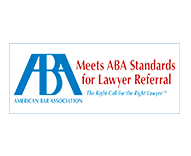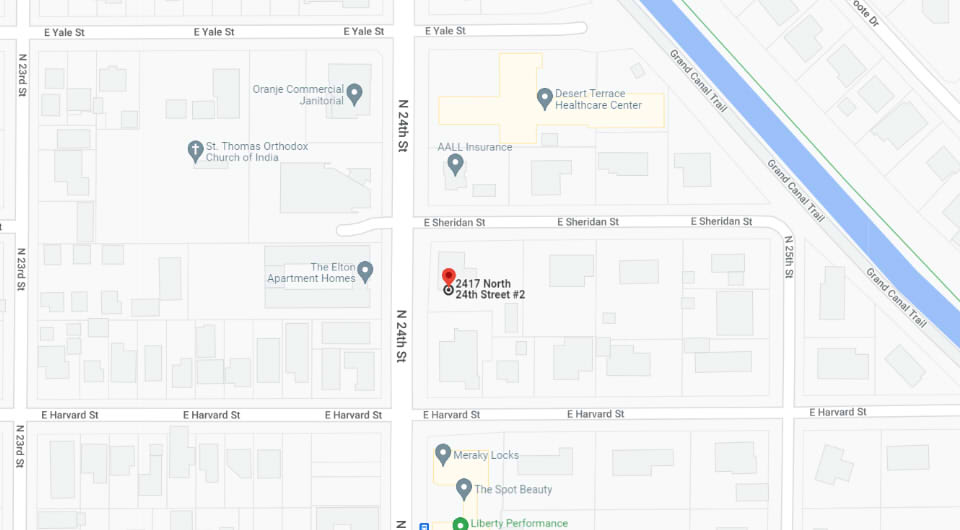The birth of an infant should come with excitement. However, a lack of appropriate care during delivery or labor can result in the baby sustaining severe injuries as they pass through the birth canal. Among these injuries are those to the brachial plexus.
When an infant sustains a brachial plexus-related injury, the consequences could be long-term, while others may be permanent. An injury to this area can cause numbness and total paralysis of the hands and arms, among other complications. Whereas babies who have sustained a minor injury recover most or all of their arm functions with time, severe damage often requires surgery to correct.
The good news is that when a brachial injury occurs due to a medical professional's negligence, the injured baby's parents are entitled to hold the negligent party responsible through a medical malpractice claim and recover compensation. The responsible party could be an obstetrician, nurse, midwife, hospital, or other medical professional.
We at the Phoenix Personal Injury Attorney Law Firm can provide the legal help you need if your baby suffers a brachial plexus injury. We are devoted to assisting our clients across Phoenix, AZ, in winning fair compensation against the at-fault party for their lifelong, continued, and immediate care, and we can do the same for you. Learn more about your legal options during a consultation session with us.
What Is the Brachial Plexus?
The brachial plexus refers to a group of nerves starting from the base of the neck and running deep through the shoulders, hand, and arm. The nerves provide movement and sensation to the upper extremity. They control the arm and hand muscles and the muscles of parts of the shoulder.
Disease or injury can disable these nerves. Most injuries to the brachial nerves in babies are due to the tearing or stretching of the nerves. The tearing and stretching could occur during labor challenges, such as shoulder dystocia. It can also happen when a physician uses forceps to free an infant and squeezes too hard.
A brachial plexus injury is sometimes temporary as the stretched or torn nerves heal, and sometimes it could be permanent. In any case, your baby does not need to suffer, and neither do you need to spend your money paying for injuries that would have been averted with proper health care.
Brachial plexus injuries could involve:
- Erb's palsy.
- Klumpke's palsy.
- Both the lower and upper arm (a total plexus injury and the least prevalent kind).
Erb's Palsy
Erb's palsy is a brachial plexus-related injury that impacts the upper arm. It is the most common injury. The seriousness of this injury varies significantly, as does the magnitude of recovery. Severe cases may lead to the upper arm being paralyzed. Pain is usual. The injured arm may also grow more gradually or atrophy more than the non-injured arm, resulting in a size difference in the arms that will continue until development reaches its maximum.
Early diagnosis, therapy, and treatment are essential to recovering more function in the arm. Early treatment could involve occupational and physical therapy. And in the case of a severe injury to the arm, a surgical procedure at a younger age might be the only option to reinstate nerve function.
Klumpke's Palsy
Klumpke's palsy injury is caused by damage to the nerves that control the hand and forearm. This injury affects the hand, wrist, and lower arm and is less prevalent than Erb's palsy. Like Erb's palsy, this injury's severity varies significantly, although even mild cases tend to result in numbness. In severe cases, the baby cannot move its forearm or hand. In these cases, the hand will be claw-like.
Also, like Erb's palsy, the extent of natural recovery is based on the severity of the injury. The injured arm might be splinted briefly to maintain normal alignment. And if recovery has not occurred within a few weeks, physiotherapy is used to improve strength, prevent contractures, enhance movement, and otherwise lower the chances of deformities. Like Erb's palsy, the doctor may recommend complex surgery.
Types of Injuries to the Brachial Plexus
The following are the different types of injuries to the brachial plexus:
- Avulsion— this is the most severe kind of injury. For this injury, the nerve tears from the spine.
- Rupture, where nerve fibers tear in part or in whole.
- Neuroma— for this injury, nerve fibers stretch, and scar tissue might develop.
- Neuropraxia— this is a temporary injury that heals within months or weeks. With this injury, the nerve suffers little stretch but does not tear.
Causes of Brachial Plexus Injuries
Virtually all injuries to the brachial plexus result from the application of excessive force by the midwife or doctor delivering the baby. This most commonly happens when the baby becomes stuck in the birth canal. If this occurs and the baby's head has protruded, but its shoulders are still stuck, it is called shoulder dystocia. Shoulder dystocia is more likely to happen in bigger-than-average babies or when there is a breech birth.
When shoulder dystocia happens, the obstetrician must act quickly to remedy the situation. However, sometimes this could result in a brachial plexus-related injury, particularly an upper extremity injury. For example, pressing on the infant's arms, pulling on their shoulders, or pulling their neck and head sideways so the shoulders can pass the birth canal can lead to a brachial plexus injury.
If the infant is too big for safe vaginal delivery, doing a C-section might lower the chances of brachial plexus injuries occurring. But brachial plexus-related injuries have also been seen in C-sections, as have a few other complications.
Improper use of vacuums can also cause brachial plexus injuries. In some cases, birth complications like breech birth positions, misalignment, problems regarding vital signs in the baby, prolonged labor, or challenges with normal pushing may necessitate the doctor to use a vacuum to ensure safe delivery. Doctors and other medical staff should be familiar with using vacuums and be capable of determining when to use them. If misused, vacuums can injure the baby's delicate skull, causing nerve damage in the shoulders and neck.
Brachial Plexus Injury Risk Factors
Almost all conditions that can obstruct the infant's passage through the pelvis are risk factors. The following are prevalent risk factors for brachial plexus injuries at birth:
- Short maternal stature.
- Mothers with a misshaped or undersized pelvis.
- Macrosomia (large babies).
- Excessive gaining of weight by the mom.
- Gestational diabetes.
- Prolonged labor (slow descent of the infant or slow dilation).
- Shoulder dystocia.
- Use of a vacuum extractor or forceps.
- A mom with a history of prior shoulder dystocia.
- A mom with a history of giving birth to an infant with a brachial plexus-related injury.
Brachial Plexus Birth Injury Symptoms
Signs that your baby may have suffered a brachial plexus-related injury manifest very quickly. They include:
- The baby's inability to move its injured arm.
- Collarbone or clavicle fracture during delivery.
- Crying or pain when the injured arm moves.
- Weakness in the infant's grip.
- The baby holding its arm bent and against its body.
When you suspect an injury, you can take your baby for a test to determine whether it has a normal Moro reflex. This test entails the doctor lifting and releasing the child's head, giving it the falling sensation. The baby's expected reaction is to swing its arms away from its body.
While the doctor conducts this test, they need to check whether the baby faces difficulty swinging its upper limb due to actual nerve damage or because it has a fracture causing pain when it moves the arm (called pseudo-paralysis).
Liability In Brachial Plexus Injury Cases
The most critical part of malpractice incidents is constantly determining whether or not the medical staff acted appropriately, as a reasonable professional would under the same circumstances, or acted negligently in given aspects of the medical care, causing an injury that may never have occurred had they provided proper attention.
Liability for brachial plexus injuries may arise from these acts by the obstetrician, nurse, or any other medical professional that participated during child delivery:
- Failure to recognize shoulder dystocia even when the first symptoms appeared.
- The obstetrician applied too much force on the child during delivery.
- Failure to perform a C-section on time.
- After completion of delivery, the doctor failed to notice that the baby had sustained an injury to the brachial plexus, which delayed treatment or therapy and might have worsened nerve damage.
- Misuse of labor-stimulating drugs.
- Failure to recognize fetal positioning or distress in the womb.
- Poor resuscitation and care of the child after birth.
- Failure to note signs of possible birthing difficulties, such as:
- Macrosomia.
- A uniquely shaped or abnormally small pelvis for the mother.
- Gestational diabetes.
- Unusually slow dilation.
- A history of large newborns for the mother.
- Obesity in the mother.
- More weight gain in the mother before birth than is generally seen.
- A history of a plexus injury during a prior birth.
Proving Liability
When your baby suffers a brachial plexus-related injury, recovering damages from the at-fault party could be an essential step in assisting the baby in healing. But before collecting compensation, you must demonstrate who is at fault. When trying to prove negligence, you must demonstrate four elements. They are:
- The defendant owed you and your child a legal duty to provide proper care.
- They breached that duty.
- You and your baby incurred damages.
- The damages directly resulted from the defendant's violation of their duty.
Owing of Duty to Provide Care
First, you must prove that the accused owed you and your baby a legal duty to provide proper care. Proving this element is usually straightforward if the accused is a nurse, physician, or other health care professional. If the party was somehow involved with the aftercare or delivery of your baby, they had the legal duty to provide appropriate care. For example, the doctor has a legal duty to apply minimal force to the infant during delivery.
Violation of Duty
After proving the defendant owed you and your child a legal duty to provide proper care, you must show the defendant violated that duty. Any action the defendant took that is contrary to the action another reasonable professional in the same situation with the same experience and training would take proves a violation of their legal duty.
Expert witnesses could help demonstrate a breach of duty by attesting to how a healthcare professional with the same credentials would act under similar circumstances. If the accused's action did not meet the standards of a reasonable professional, then they violated their duty.
Suffering of Damages
Proving this element is generally straightforward. If your infant sustained an injury to the brachial plexus, it would incur damages. A physician not involved with the case can run tests on your infant and ascertain that they sustained an injury.
The Damages Resulted Directly from the Violation of Duty
The last element is to link the violation of duty to your and your child's damages. Proving that all the above facts existed is insufficient to demonstrate negligence. You must be capable of showing that the violation of duty directly resulted in your child's injury. A skilled lawyer can assist you in demonstrating this link so you can collect fair compensation.
Damages Recoverable In Brachial Plexus Birth Injury Cases
Once your child has sustained a brachial plexus-related injury, recovering damages can be critical as it helps pay for treatment. You want to identify any damages you qualify to seek so you can collect maximum compensation. Luckily, a skilled lawyer can assist you in identifying what compensatory (non-economic and economic) damages apply to you and whether you are entitled to punitive damages.
Economic Damages
Also called special damages, economic damages compensate for any losses the injury caused that harmed your financial situation. Common special damages you might be eligible for after your child suffers a brachial plexus-related injury include the following:
- Loss of income if the child's injury made you miss work.
- Past and present medical bills, including costs for the doctor, occupational therapy, physiotherapy, surgery, and assistive devices.
- Loss of earning capacity if the injury will impact your baby's capability to earn wages or income later in their life.
- Future medical expenses for ongoing treatment.
- Funeral expenses if the brachial plexus led to your child's demise.
- Out-of-pocket expenses.
Non-Economic Damages
Also called general damages, non-economic damages compensate for non-physical loss because of the injury. Prevalent general damages you can recover for a brachial plexus-related birth injury include the following:
- Mental anguish.
- Permanent disability.
- Pain and suffering.
- Emotional distress.
- Decreased quality of life.
- Disfigurement and scarring.
- Loss of enjoyment of life.
Punitive Damages
Should the court establish that the at-fault party acted grossly negligently or with the specific intent to cause harm, you might be eligible for punitive damages too. Unlike compensatory damages, punitive damages are awarded to penalize the liable party for their mistakes and deter others from engaging in the same behavior.
Statute of Limitations in Brachial Plexus Injury Cases
You want to initiate a case sooner after your baby is diagnosed with a brachial plexus injury so you can recover the funds to pay for their care. But there is a timeframe for filing a suit, as described under the statute of limitations law.
In Arizona, you have 24 months, counted from the date of discovering your baby's injury, to file your lawsuit. Take note of this 24-month deadline because failing to file the lawsuit by this timeframe will result in losing your right to seek compensation.
Various exceptions to this statute of limitations may allow a person to bring a suit after the stipulated timeframe has elapsed. A prevalent exception in birth injury incidents is that the affected child can bring a suit within 24 months of turning eighteen if the parents failed to pursue damages when the injury happened. Also, some exceptions can limit the timeframe for filing your case. Instead of 24 months, you may be limited to fewer months. Your lawyer can assist you in determining the appropriate deadline to file your claim.
Initiating the process of pursuing damages early enough gives your attorney ample time to develop a solid case before the stipulated deadline compels them to file legal paperwork in court. Do not wait to file until the last minute.
Find a Phoenix Medical Malpractice Injury Attorney Experienced In Birth Injury Cases Near Me
When seeking to recover damages for any birth-related injury, you want to hire an attorney experienced in handling cases of this nature. Recovering compensation from these cases requires intimate knowledge of current obstetrical practice and the complications that might arise during delivery or labor.
The cases rely on developing a comprehensive timeline of what occurred, when, and the healthcare provider’s response. All this must be scoured from the extensive medical records, complemented by testimony from everybody who witnessed the incident. And it must be done per the law so the at-fault party can be held accountable.
At the Phoenix Personal Injury Attorney Law Firm, we are specially experienced and qualified to handle all of the above. Our birth injury lawyers are also physicians and have, for decades, helped parents of babies who suffered senseless, needless birth injuries recover the damages they deserve. We handle all types of birth injury claims and lawsuits, brachial plexus injuries included. Call us today at 602-641-9589 and schedule a free consultation and case review session.










